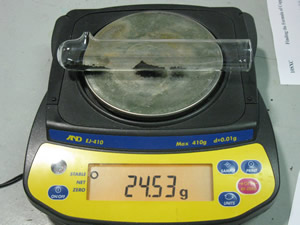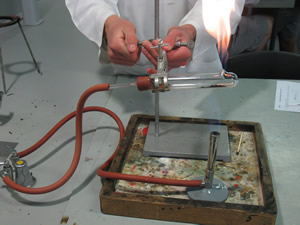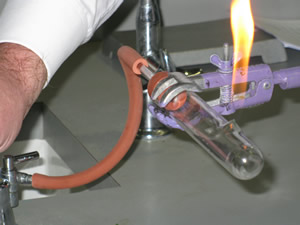



Step 3 Assemble the apparatus as shown on the right. Ensure the test tube is clamped near the neck away from the copper oxide and the hole in the test tube is pointing upwards.
Step 4 Connect the test tube to the gas and allow the gas to pass through for no more than 30 seconds. This will ensure that all oxygen is removed from the tube.



Step 7 When the copper sample has changed to a brown colour remove the Bunsen but continue to pass gas through the test tube and burning it at the end for 10 minutes until the test tube returns to room temperature. This will stop reoxidation of copper back to copper oxide.

ANswer the following questions using the data provided on this page.
1) What is the mass of copper oxide?
2)
What is the mass of copper metal present after reaction?
3)
What was the mass of oxygen present in the sample of copper oxide?
4) Determine the amount of copper in mol.
5) Determine the amount of oxygen in mol.
6) Knowing that the other products of the above reaction are water and carbon dioxide write a balanced chemical equation for the reaction.
7) From your calculations determine whether the copper oxide used was copper(II)oxide or copper(I)oxide.
Show all working out.
8) What happens to the accuracy of our results as we use smaller quantities of copper oxide?